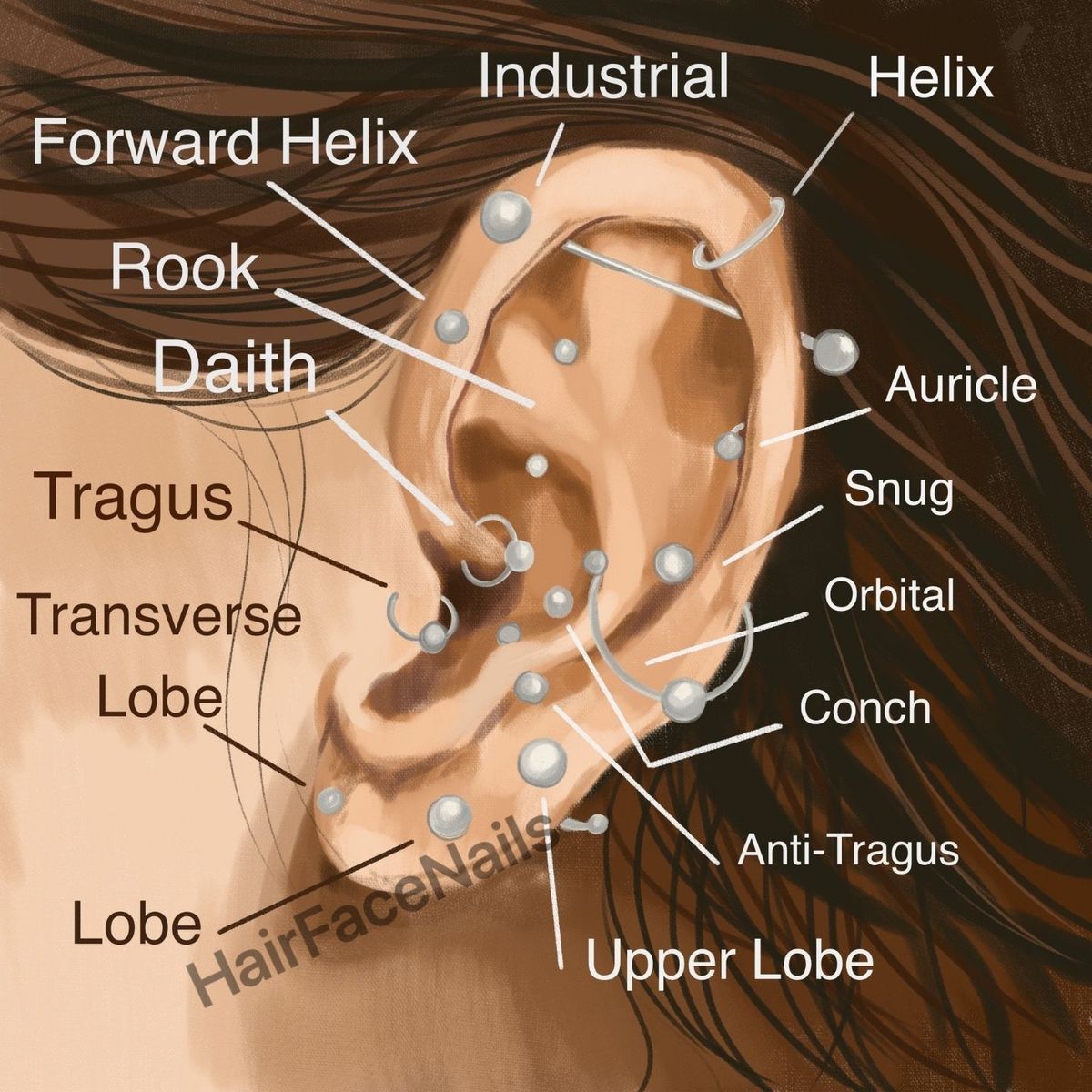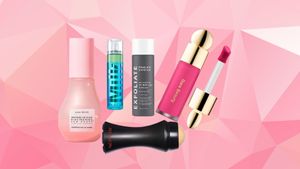When it comes to getting a new piercing, there are so many options and styles that it can be hard to choose what will work best for you.
Ear piercings are becoming very common these days. They are a great way to express yourself and show off your individuality. Many celebrities have them done, such as Katy Perry, Lady Gaga, Rihanna and Selena Gomez. If you want to get pierced, then you should know what exactly you are looking for ahead of your piercing appointment and what to ask your ear piercings specialist. This guide will teach you everything you need to know about ear piercings.
Quick Facts:
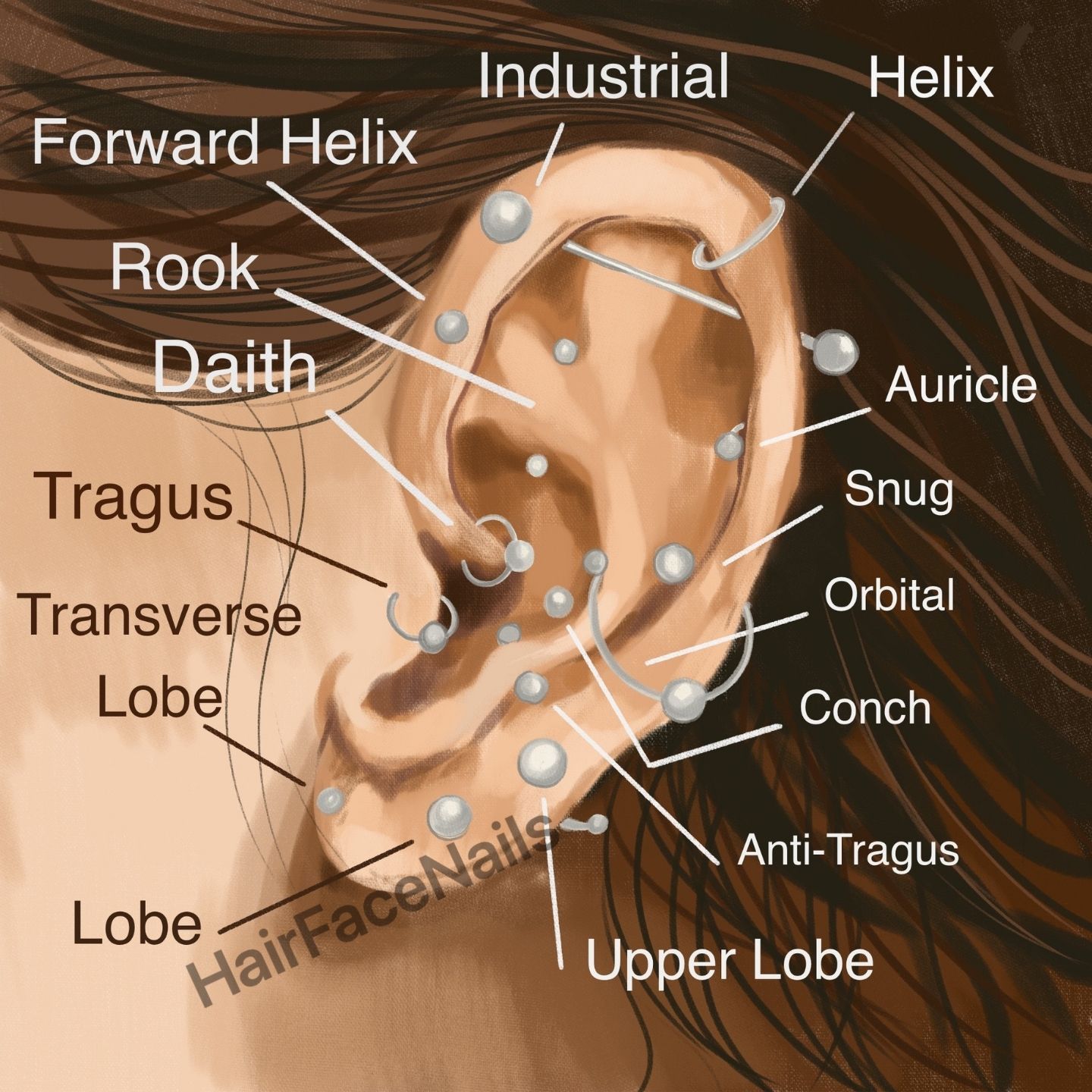
Ear piercings are a great way to express personal style. You can choose from numerous designs and styles and piercing placements, such as studs, hoops, dangles, drops, etc. The only thing you need to decide is whether you want to go for a single piercing or multiple piercings.
Tragus Piercing

Your tragus is the small piece of skin covering your ear canal and a tragus piercing is an earring that goes into the tragus. This piercing is quite painful around 6/10 and healing time might take anywhere from 3-6 months and up to a year in some cases.
The tragus piercing is a great option if you want something small and discreet but still looks cool and cute. It’s also one of my favorite piercings because it’s so tiny!
Anti-tragus piercing

The anti-tragus piercing is a cartilage piercing that goes through the cartilaginous ridge on top of your lobe. Healing time for this piercing takes 2-6 months although some people report it taking longer to heal completely.
Conch Piercing
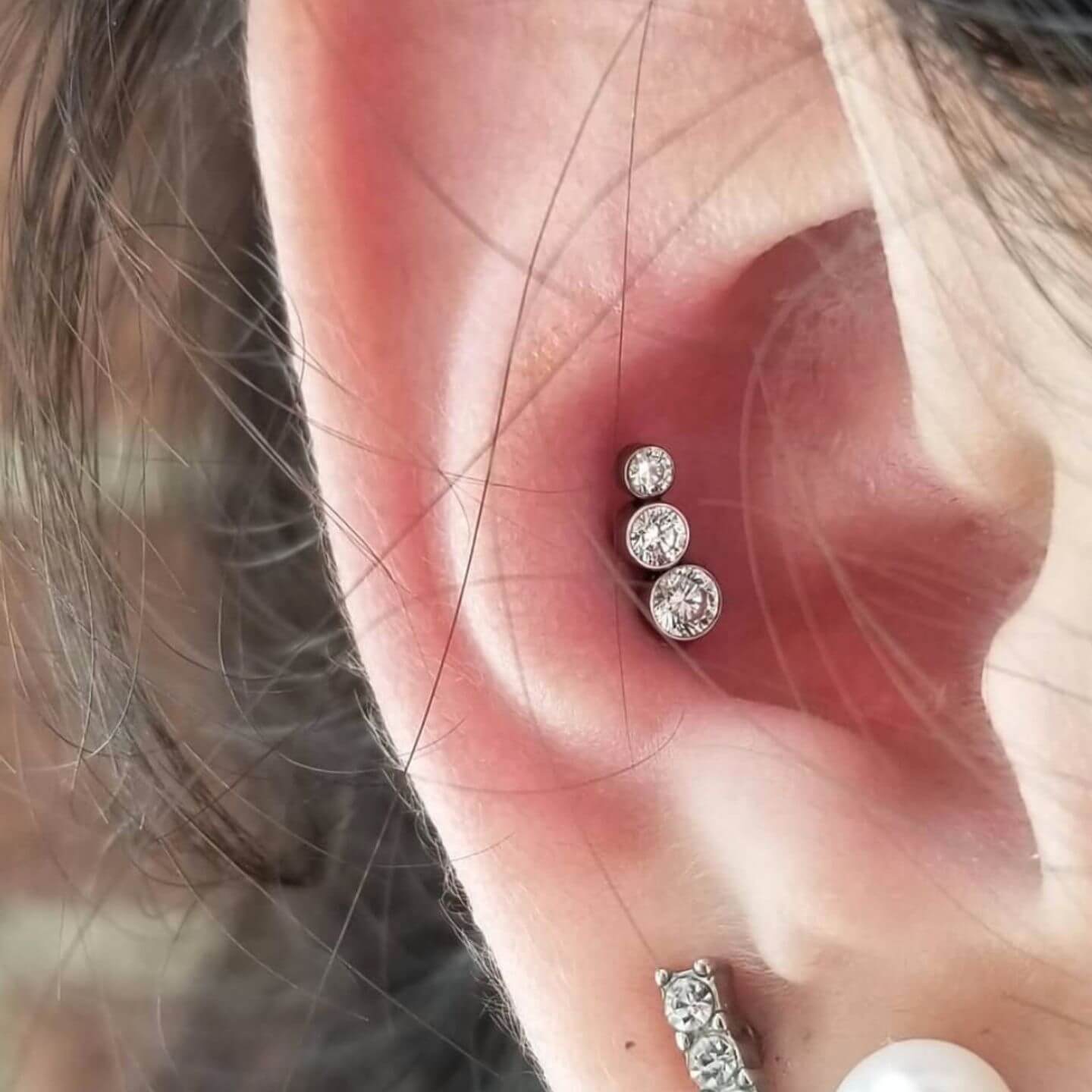
The conch is the inner part of your ear, with two major regions: the inner and outer conch. As it’s more of a thicker ear piercing, the conch might be slightly more painful than some other ear piercings. However, this can vary from person to person. Conch earrings are not recommended for new ear piercings as the healing time is roughly around 6 months to a year.
As with most ear piercings, conch earrings are a great way to express your individuality and style. It’s a fantastic earring that can be worn by anyone. If you want to give it a go, then make sure to find a piercing professional that is experienced in ear piercings.
Industrial Piercing

Another ear piercing that has become very popular is industrial piercing. This earring consists of two separate earrings connected by a straight barbell or curved barbell. The length of ear piercing can vary and usually falls around 4-5 cm.
This ear piercing is usually performed through the outer cartilage, making it a little more painful than some ear piercings. The pain levels can range from 3 to 8/10 depending on your pain threshold. It’s also suggested that you hold off on getting this ear piercing if you are having ear surgery.
Industrial earrings are a great way to express yourself and your individuality. It’s popular for those who want something different or unusual that will still look cute.
Helix Piercing
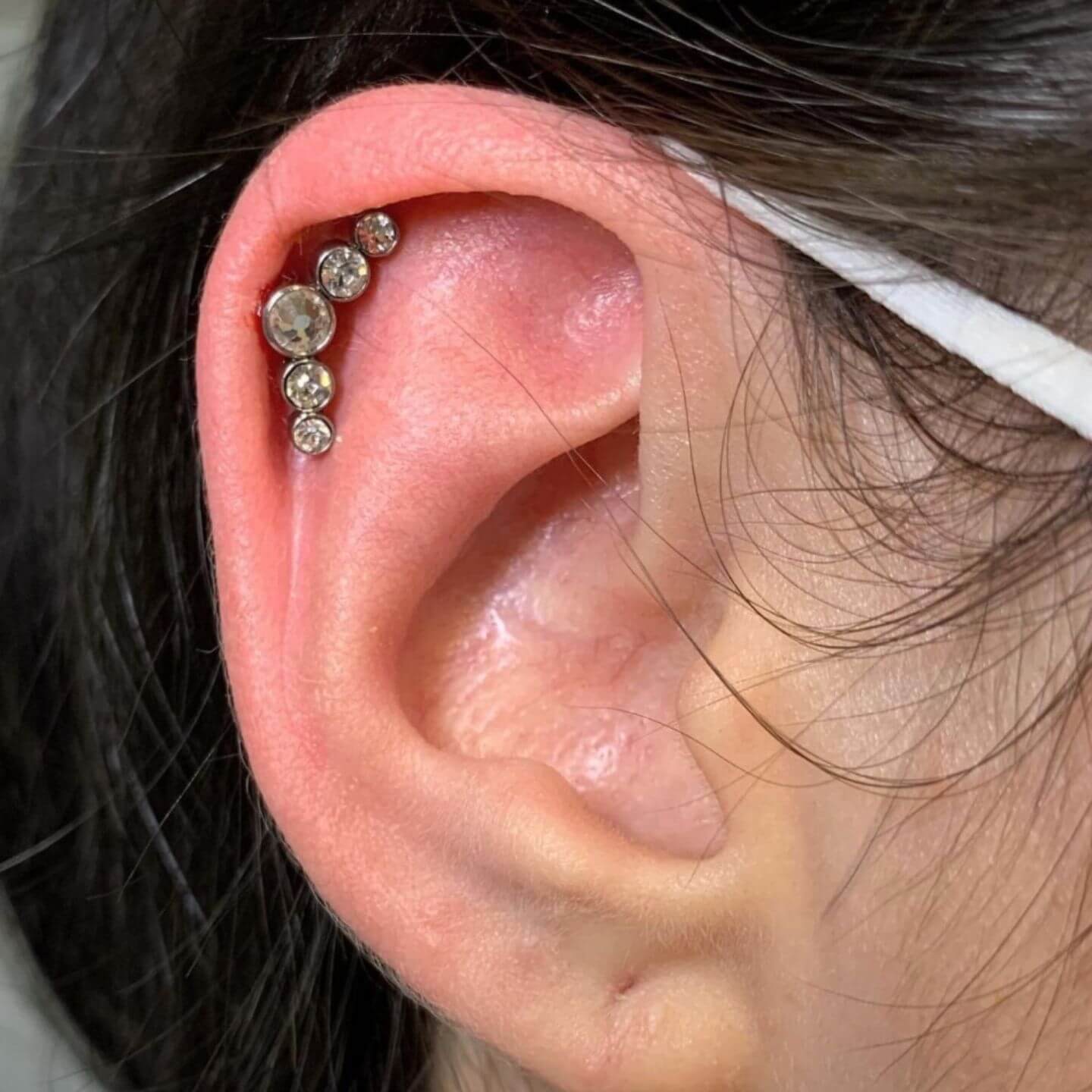
Helix ear piercing is one of the most popular earrings people get. This ear piercing goes through the ear cartilage on your outer ear and can be done in multiple ways. You can get it done using a traditional ear piercing stud or you can go for helix earrings. This earring is fun and funky, with popular designs being everything from stars, hearts, crosses to even your name!
This ear piercing is usually less painful than other cartilage piercings because there are less nerve endings in that part of the ear but can vary depending on what type of ear piercing you get. The ear piercing pain levels vary from person to person, however it usually falls around 4/10 on the pain scale.
Helix earrings are a fantastic earring for anyone looking for something fun and different that will still look great! It’s a great ear piercing option if you want something discreet yet stylish.
Ear Lobe Piercing
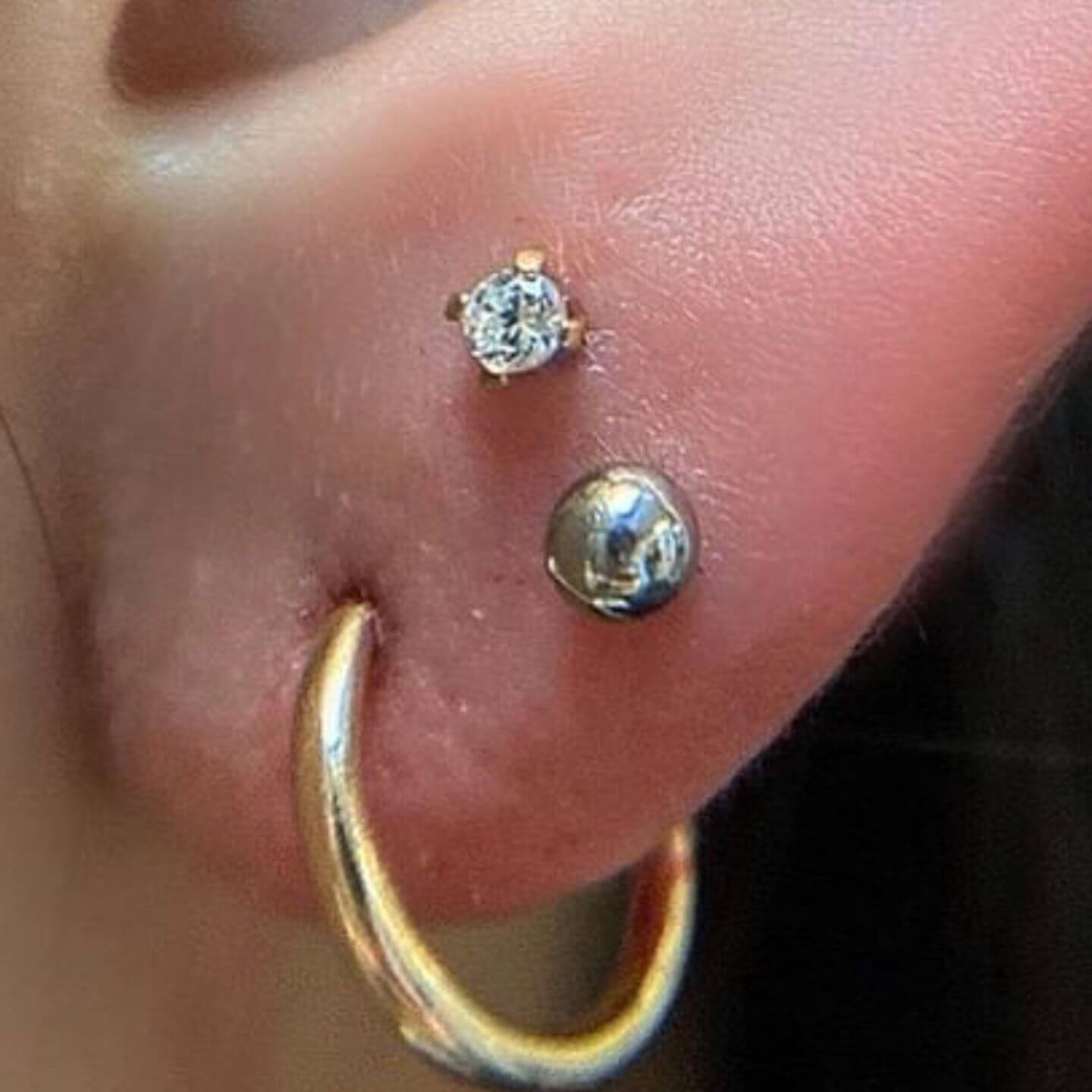
Ear lobe piercing is the most traditional look of all ear piercings. It consists of earrings that go through the ear lobes and typically hangs down. This ear piercing is usually less painful than ear cartilage piercings.
This earlobe piercing is a great way to express yourself and your individuality, with various earrings to choose from such as dangles, stud earrings, pearls, and more!
Ear piercing pain levels can range from 2/10 of the pain scale and it will take 2-3 months for this ear piercing heal.
Orbital Piercing
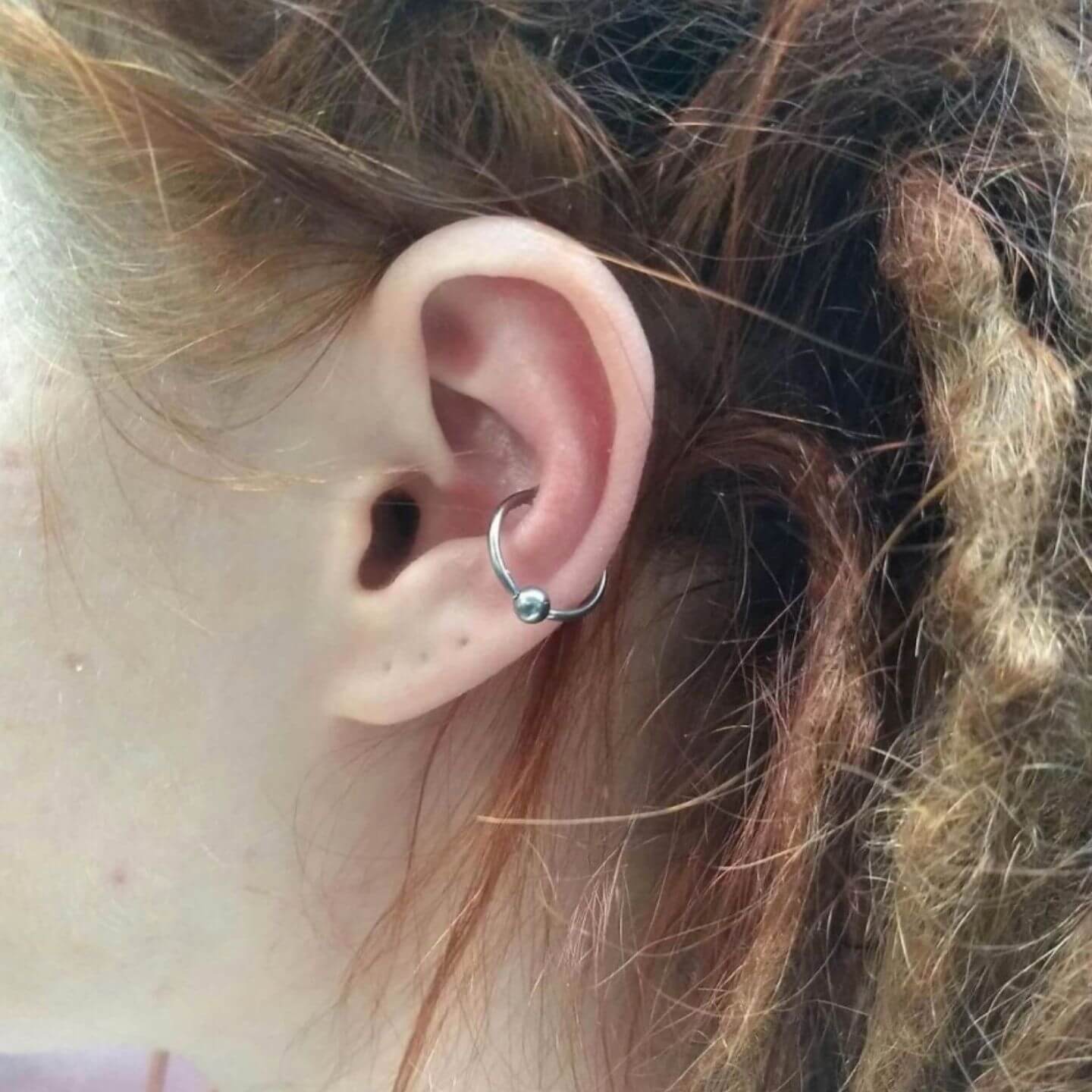
A single ring is used to connect two holes, hence the name for this piercing type. Orbital earrings can be worn in the earlobe. This piercing is rated at 6/10 on the pain scale since it comprises of two piercings rather than a single one. Healing time can take up to a year for your ear piercings to heal.
Snug Piercing
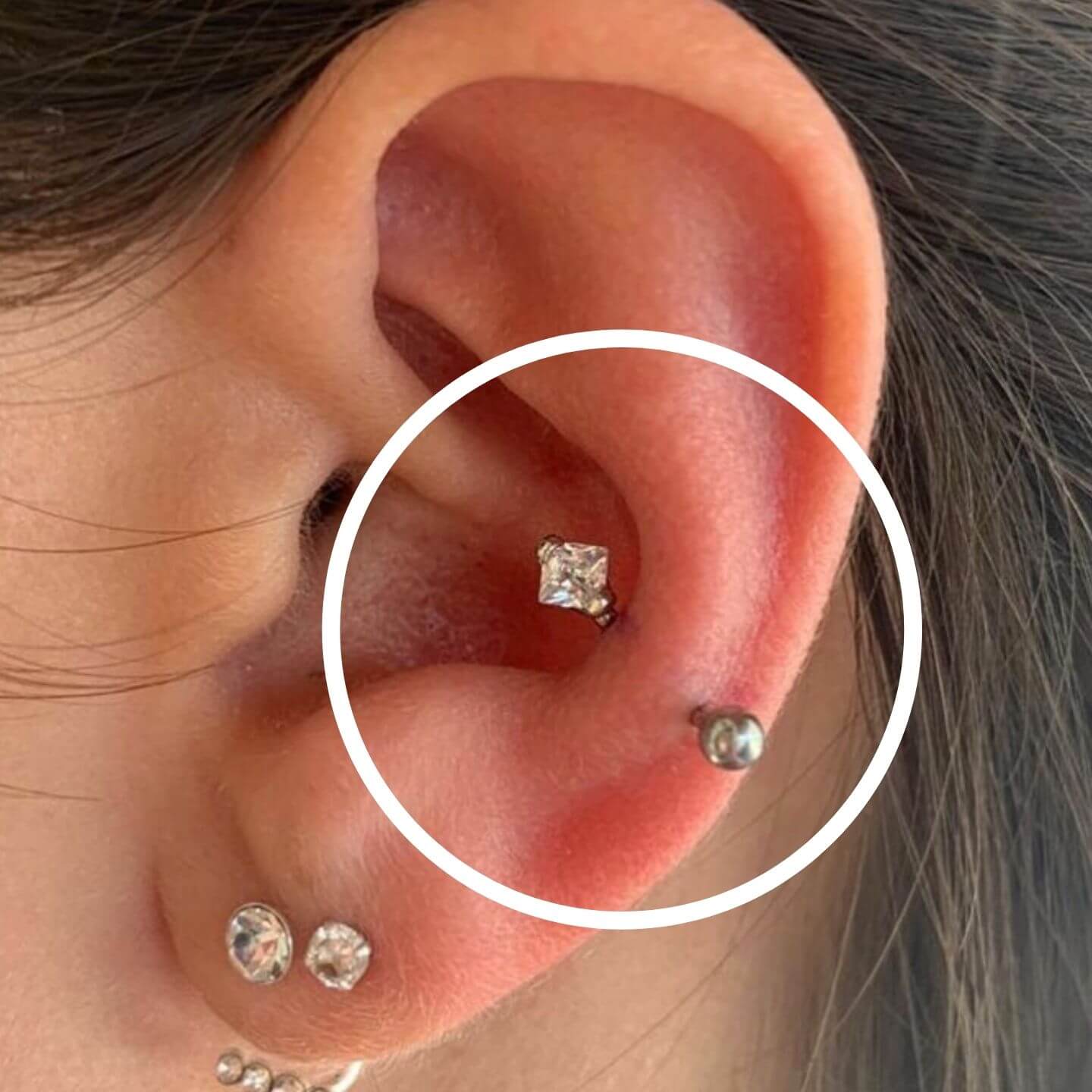
Snug piercing is a type of ear cartilage piercing where one earring wraps around the ear and joins to the other earring.
This ear piercing goes through your ear cartilage, which makes it extremely painful at 8/10 on the pain for cartilage piercings and can take up to 9 months to heal.
Ear Stretching

Stretched earlobes gained some momentum over the past few years. There are many ear gauges in the market, in many different earring styles. Gauge earrings can be made out of plastic, steel earrings (for increased weight), wooden earrings, and even glass earrings.
This ear piercing is not for everyone; it all depends on what you prefer. Gauges are definitely not recommended if you plan on getting ear piercings in the future. The ear will need to be fully healed before stretching it again and earrings can cause irritation when worn for a long period of time.
This ear piercing is also very painful, somewhere between 8-9 out of 10.
The ear stretcher is a great way of expressing your style and individuality, but you should know that ear gauges can cause problems such as:
- Infections
- Earlobe ripping
These ear piercings can be difficult to hide, but ear gauges are definitely eye-catching statement earring that is sure to make people turn heads!
Daith Piercing
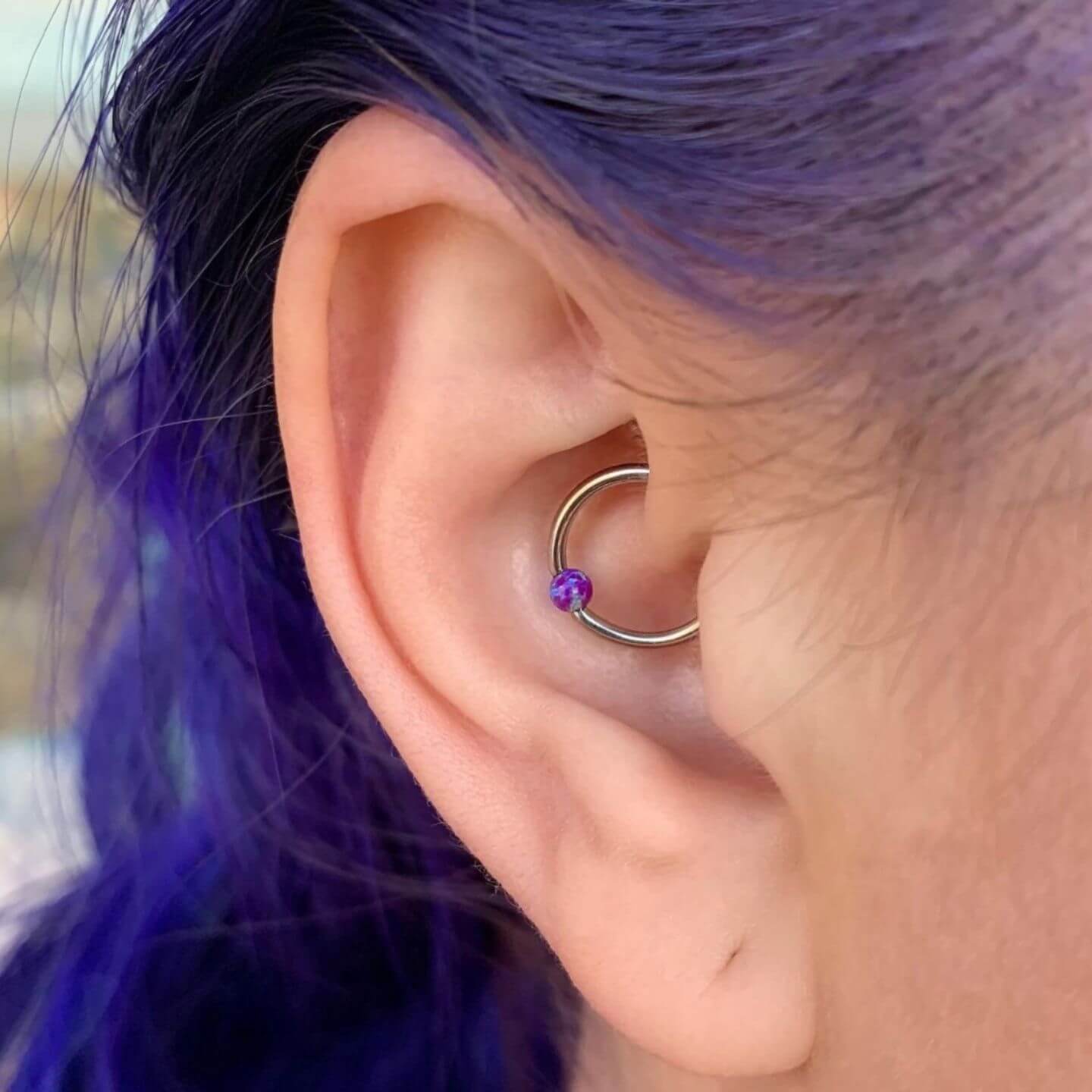
A daith piercing is on the tiniest fold of cartilage in your ear, where the outer ridge of your ear meets the inner edge of your ear above the ear canal. This earring can be worn in multiple ways, such as with an ear stud or hoop.
Pain is about 6 out of 10 and the healing time can take from 4 to 12 months.
Auricle Piercing
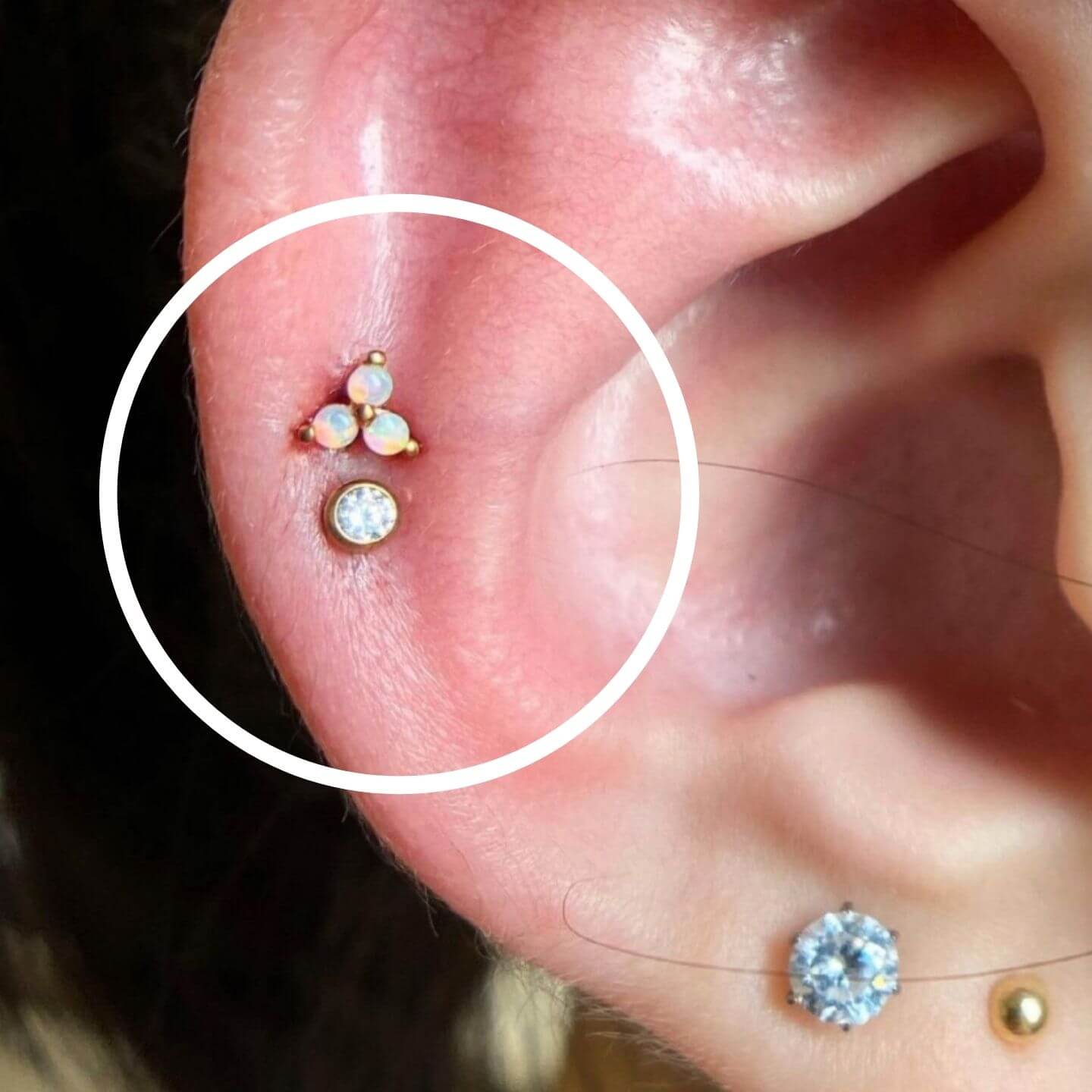
Your ear's exterior is known as the auricle it is the tiny area between your helix (outer fold) and earlobe. This ear piercing is usually not that painful, only about 3 out of 10, and heals pretty fast in about 3-9 months.
What is the most painful ear piercing?
The Snug ear piercings are considered the most painful. Snug piercing is a type of cartilage piercing that is located at the top of the anti-tragus. The anti-tragus is the area that sits between the rim of your ear and the inner cartilage. The piercing is inserted in the anti-helix, which is a space between the edge of your ear and the inner cartilage. Snug ear piercings can be painful and the worst part is it may not work for your ears. If you have small or delicate ears, a snug ear piercing may not be the best option for you.
What's the least painful ear piercing?
Good old lobe piercing is the least ear piercing pain you will encounter. A lobe ear piercing only takes a needle and it is pretty much over within just a few seconds. The earlobe itself is full of blood vessels which makes the healing process relatively fast compared to other types of ear piercings.
How long does it take for a pierced ear to heal?
While the earlobe can take 6-8 weeks to heal other ear piercings can take longer. On average ear piercings heal anywhere from 3-6 months and earlobe earrings usually take the least time to heal.
What piercing is most popular?
Lobe, helix, and daith piercings are probably considered the most popular choises when it comes to ear piercings.
New Piercing Ear Care
Should I twist my new ear piercing?
No, ear piercings should never be twisted. While earrings can cause ear piercing pain, earlobes shouldn't hurt or feel tender for more than a few days after ear piercings. Twisting earrings may damage your ear and leave you with an infection so avoid this practice altogether.
What is an infected ear piercing?
If you have an infected ear piercing, it may be red, swollen, sore, warm, itchy or tender. The piercing may also bleed or produce pus that is white, yellow or green in color.
A new piercing is a wound that takes several weeks to heal. During that time, it can get infected with germs.
What are the symptoms of infected ear piercings?
Some pain and redness are normal when your ears are newly pierced. If the pain and redness gets worse, or if you notice other symptoms like swelling or discharge, then you might have an infection.
A sign that there might be a problem with your piercing is if you have discharge coming from the area. If you see that, or if it's tender, or red, then you should know that something might be wrong.
How can I prevent a pierced ear infection?
Taking good care of your piercings is important so that they heal. You should:
Leave your earrings in all the time. Wash your hands before touching the piercing. Wash it twice a day with soap or a cleanser. Apply antibiotic ointment or petroleum jelly to the piercing and then slowly rotate the earrings.
So, there you have it. Everything you could possibly want to know about ear piercings! Now that you are an expert on the subject, which type of piercing are you going to get? We hope this post has helped make your decision a little bit easier. Remember to take care of your new piercing and enjoy your new look!

